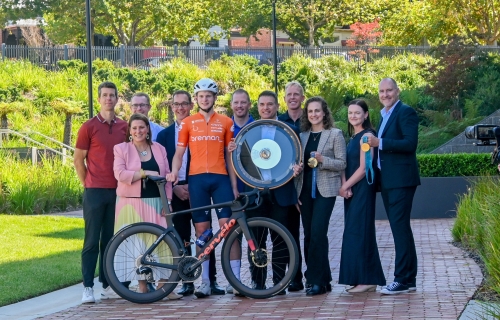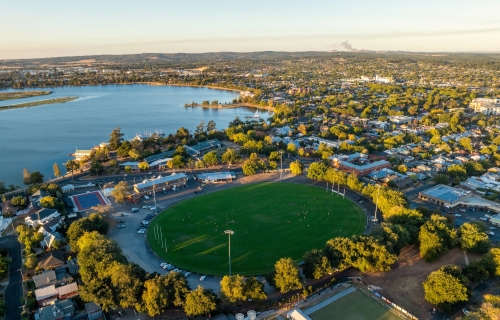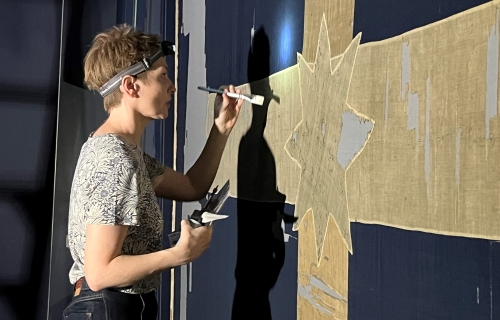Mayor's editorial: Advocating for a Materials Recovery Facility
 Published on
Published on

By Cr Daniel Moloney | Mayor, City of Ballarat
A recent visit to the tip was a real moment of reckoning for me. I was there to inspect progress on one of Council’s bigger infrastructure projects - construction of a new cell at the Ballarat Regional Landfill.
The sheer size of the excavation and its cost came as a shock. Essentially, a cell is a great big hole in the ground. Technically it’s a highly engineered, fully compliant pit designed to contain waste.
But with a construction price tag of $2.9 million, and a life expectancy of just two years, burying the city’s waste is an increasingly expensive and unsustainable option for the people of Ballarat. To break it down further, based solely on the construction cost of the cell, we’re spending around $28,000 a week, or $4000 a day to bury our waste. It’s substantially more than that every day when you take into consideration collection, transport, operational costs and levies paid to the EPA.
It’s not sustainable. Not financially, not environmentally.
The good news is we can work together to change the narrative. As individuals, as families, as a community and as a Council we must change our behaviours - we need to reduce what we buy, reuse where we can and recycle as much as possible. If we can do that, we can have a positive impact on reducing the amount of waste going to landfill.
Every year about 5000 garbage trucks full of waste are collected from homes and businesses in Ballarat. They tip their loads - some 50,000 tonnes worth - into Ballarat’s Regional Landfill.
But think about this, if every household in Ballarat reduced the amount of garbage in its bin by just one average size bag every week, the life of the landfill would be extended by around two months. Just one kilogram less in your garbage bin each week would keep almost 2,000 tonnes out of landfill each year.
That’s good for the environment and it’s good for the financial bottom line.
I try to do my bit. In my house, we recycle, and we work to minimise our waste. If our rubbish bin is more than half full on collection night, I know it’s been a bad week and we need to do better. And yes, I know that even half filling my bin means there’s still much that my household can do to further improve. Let’s all try to ‘get it right on bin night.’
Good recycling habits are critical. Of those 50,000 tonnes of waste going to the tip each year, about 10,000 tonnes - cardboard, glass, aluminium, plastics and paper - is recyclable and shouldn’t be in landfill. Our data shows that 20% of what Ballarat residents put in their garbage bin includes common household recyclables that should be placed in your yellow-lid recycle bin. If we all play our part, improve our recycling habits, and keep recyclables out of our rubbish bins, we can extend the life of the landfill.
We’ve noticed that during the covid pandemic lockdowns the level of contamination in our recycling bins has increased, with a spike in contamination rates of between 20% to 25%, well above our target of just 5%. It’s an issue for all councils as people spend more time at home and take on more DIY projects. As a result, we’re finding a lot more wastes like timber, metal and e-waste, as well as an increase in food waste, textiles and soft plastics in recycling bins.
The truth is recyclables are a valuable resource. Glass, paper and cardboard, metal and plastics can all be reused to create useful new products as part of a well-functioning circular economy.
The City of Ballarat is doing its part by constantly reassessing all of our operations. Much like my own household bin, Council operations are also working to reduce landfill as a result of our works. We’re also seeking government support to create a Circular Economy Precinct at the Ballarat West Employment Zone. We’re also seeking support to build a Materials Recovery Facility to anchor the Circular Economy Precinct.
A local Materials Recovery Facility will receive and sort commingled recyclables from much of Western Victoria, it will create local jobs in recycling and manufacturing and help reduce greenhouse gas emissions. It will mean we can better sort our waste so around 10,000 tonnes less a year of recyclables, around one thousand fully loaded garbage trucks, doesn’t end up in landfill.
It’s a sustainable option, one that delivers on the Victorian Government’s recycling policy and strategic vision for this sector. It will attract new investment and bring innovation and jobs to our city and our region. We already have interest from companies wanting to co-locate over $100 million worth of projects in a Circular Economy Precinct at the Ballarat West Employment Zone.
We have a vision for a more sustainable future. I’m suggesting we all work together to make it a reality.
For more information on City of Ballarat's advocacy for a Materials Recovery Facility, visit www.ballarat.vic.gov.au/mrf
More news

 17 April 2025
17 April 2025
Sharing the musical talent of Ballarat with the world – artists and mentors announced for Be Hear Now

 15 April 2025
15 April 2025
World-class cycling rolls into Ballarat

 15 April 2025
15 April 2025
City of Ballarat welcomes City Oval upgrade funding commitment

 15 April 2025
15 April 2025
Forget your resident ‘binfluencer’ – download the Ballarat Waste app

 14 April 2025
14 April 2025
Eureka Flag remains in good condition after 170 years
Ballarat’s treasured Eureka Flag remains in a stable condition, according to a recent conservation assessment.

 11 April 2025
11 April 2025